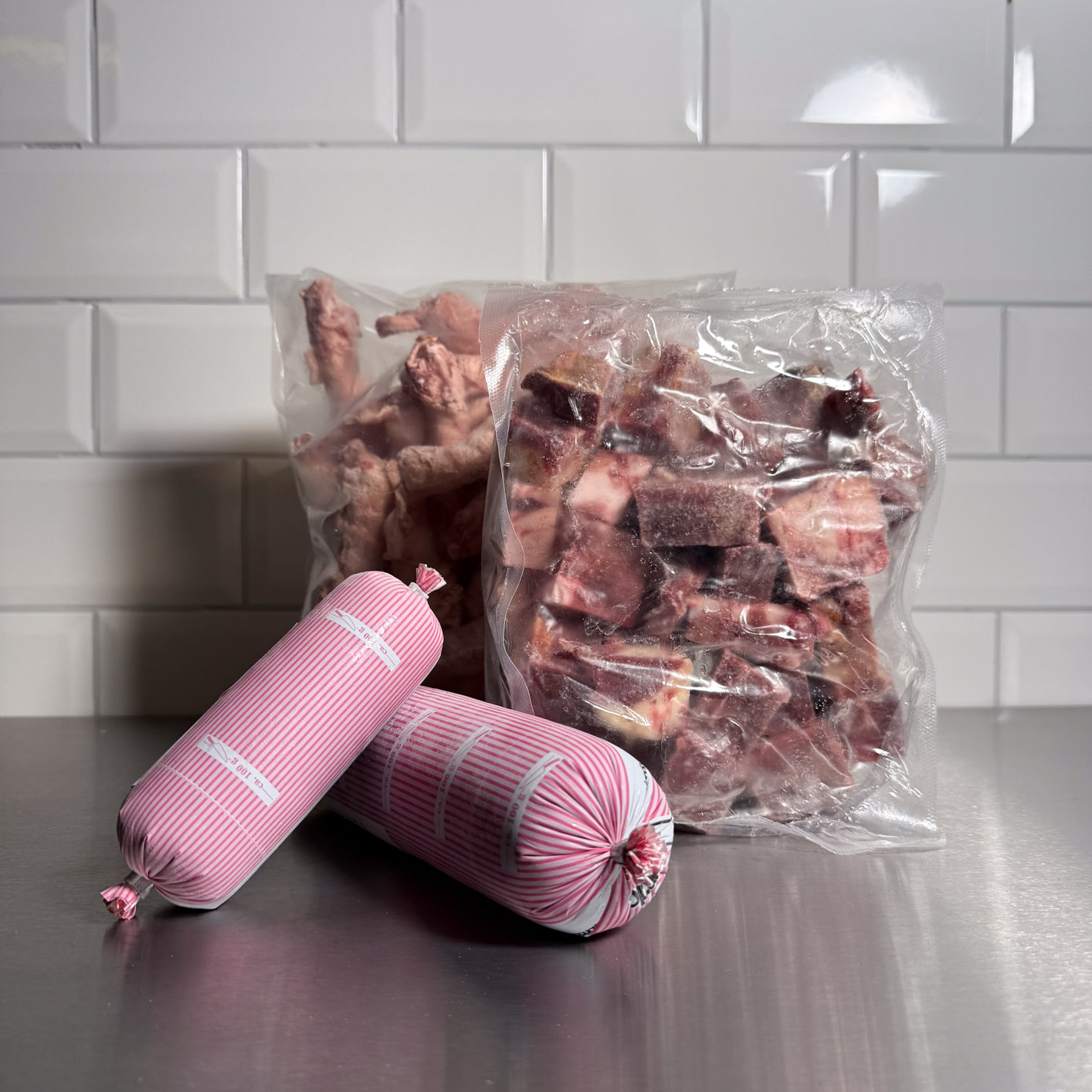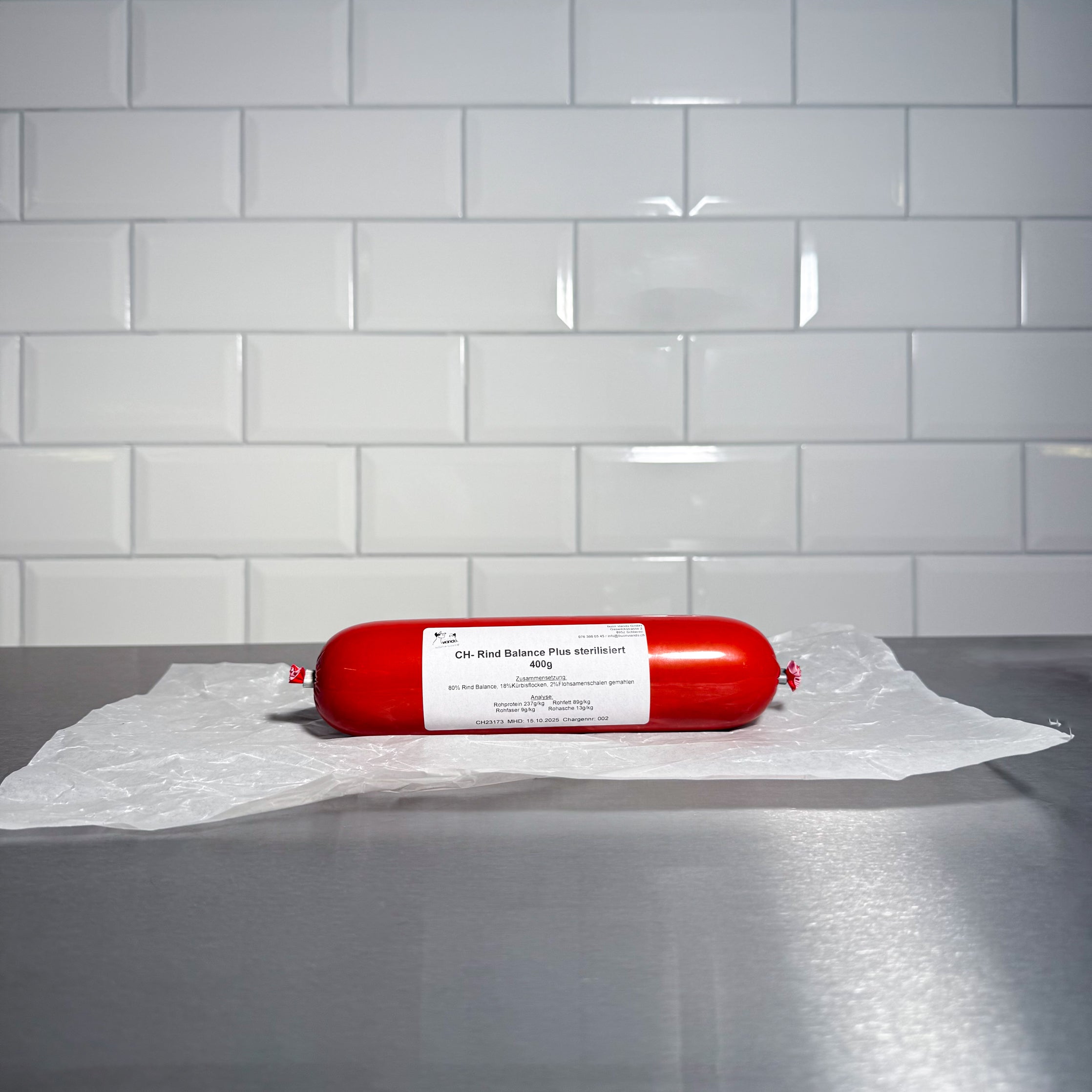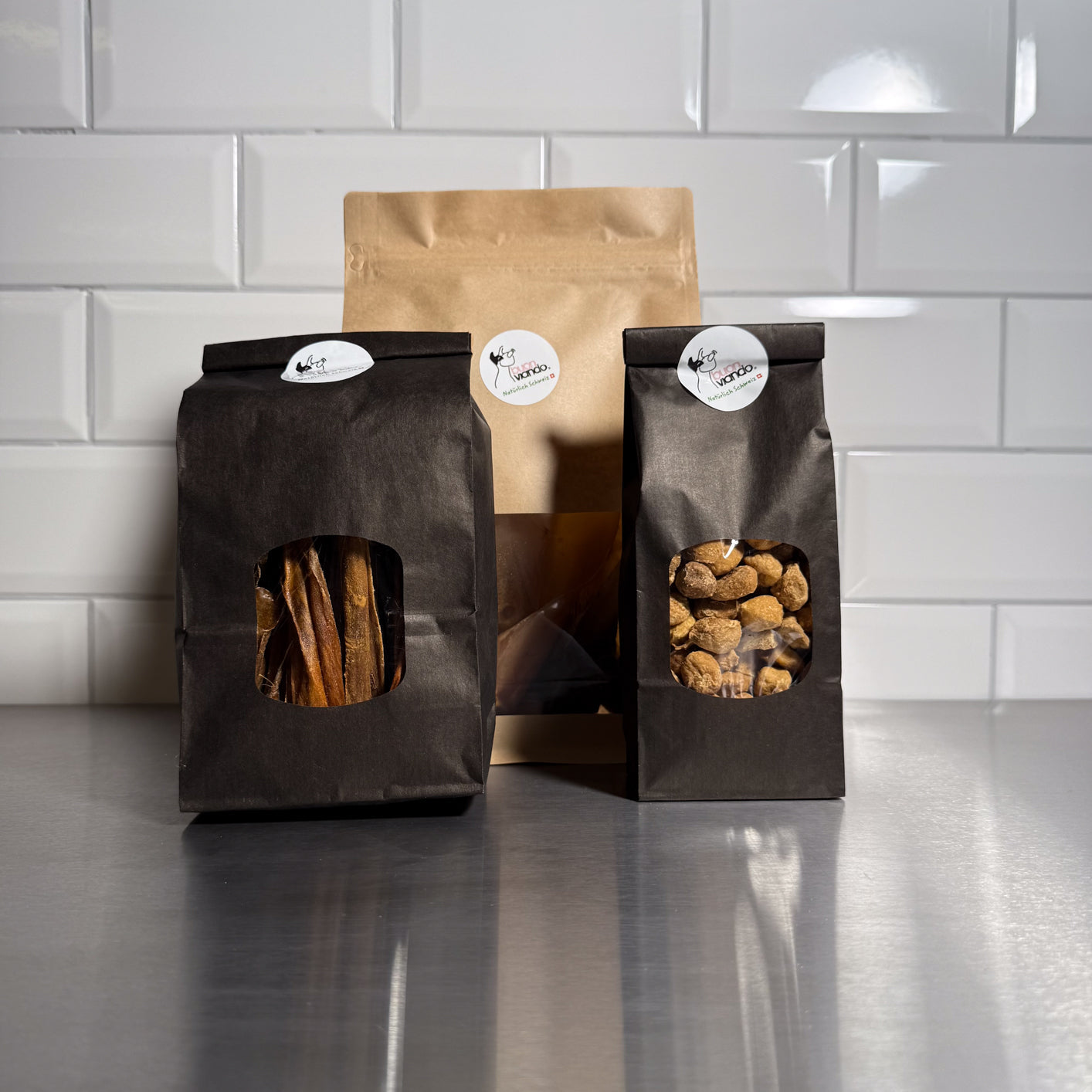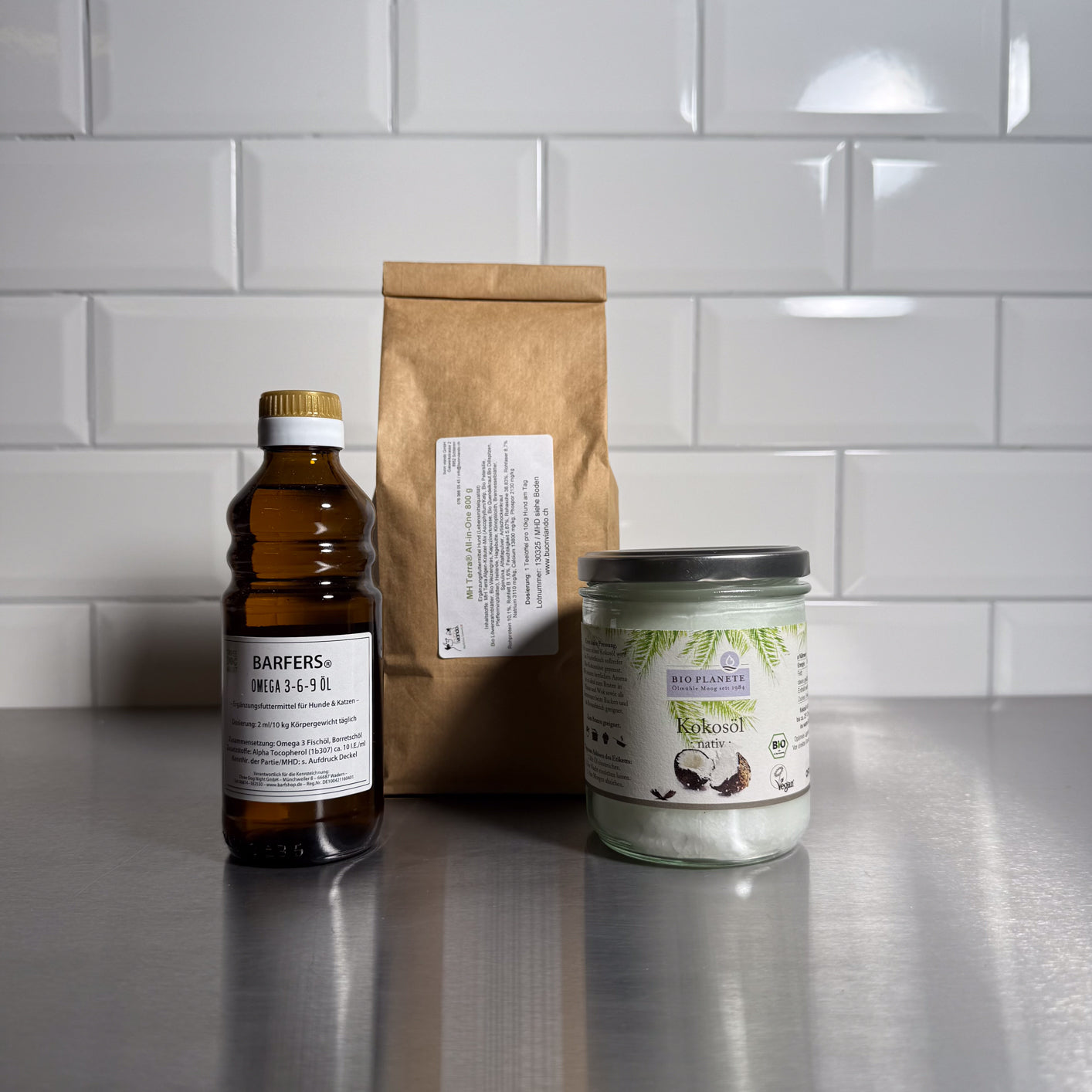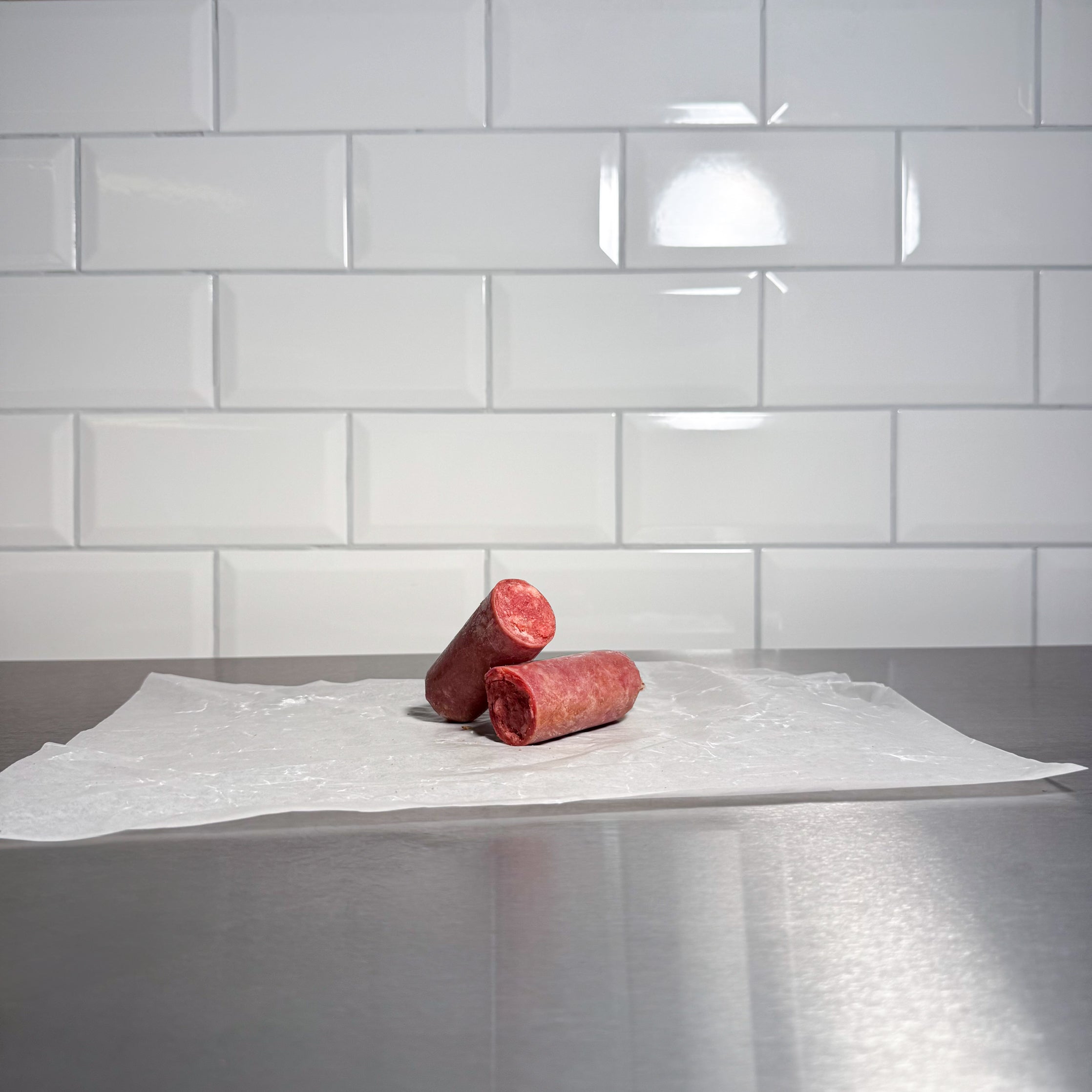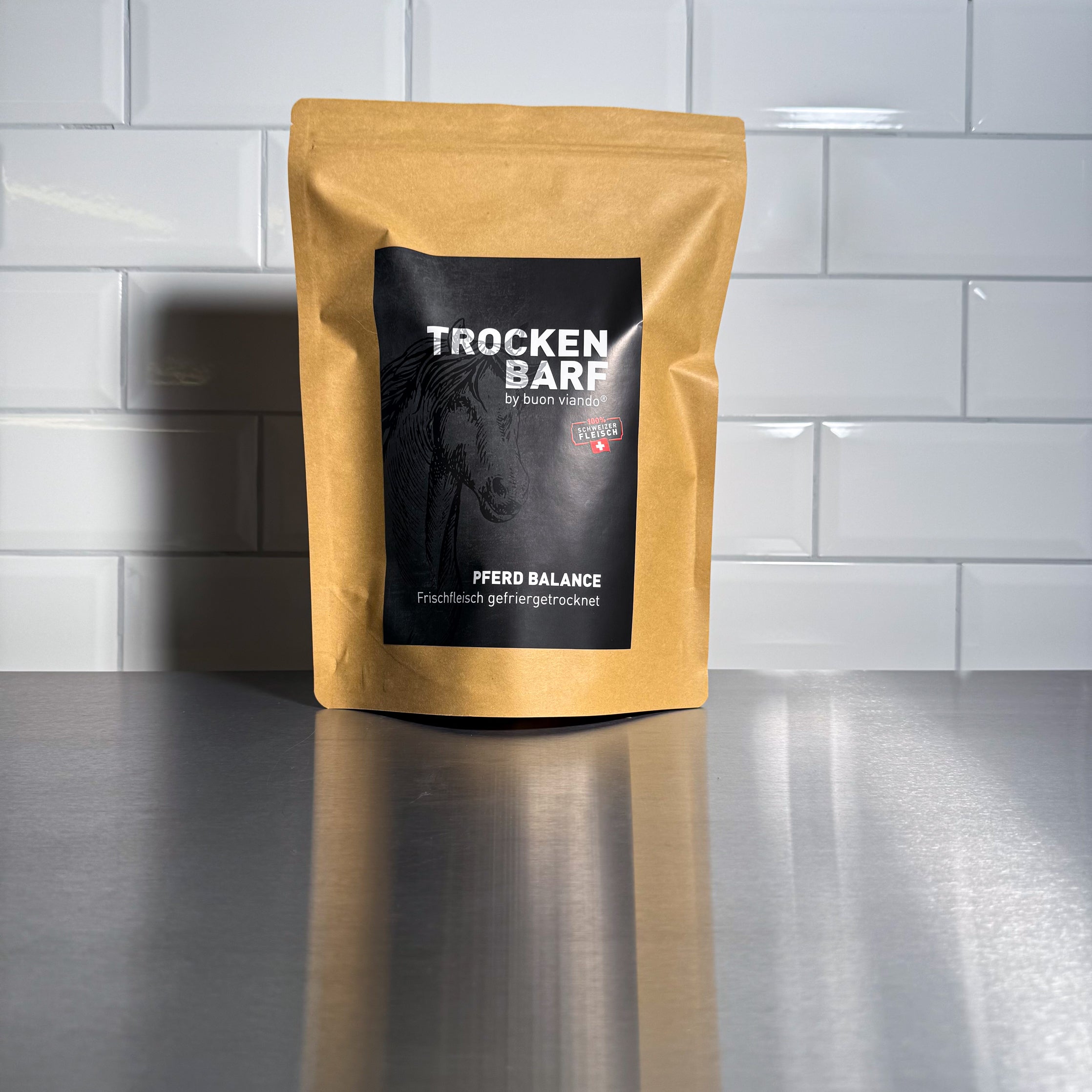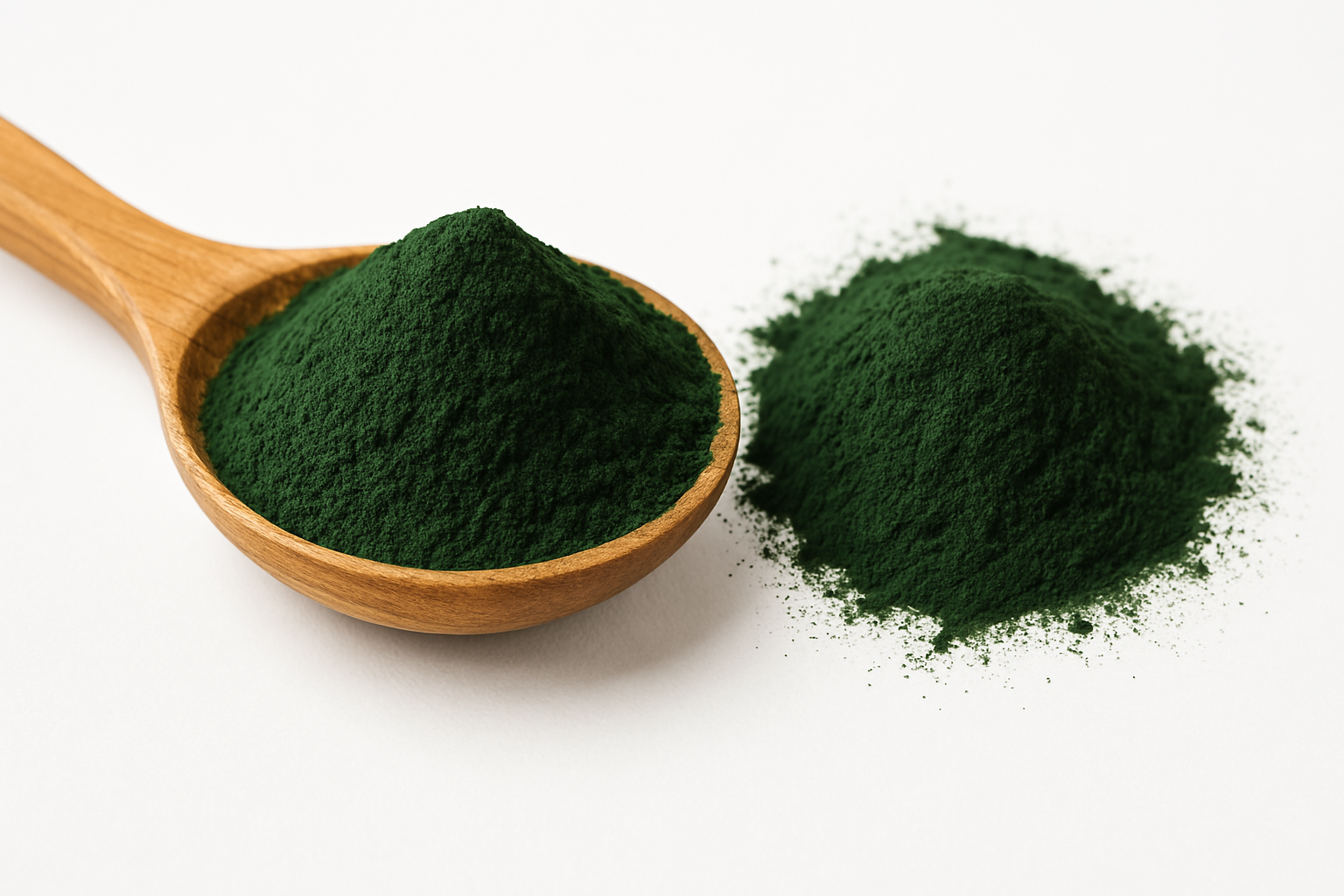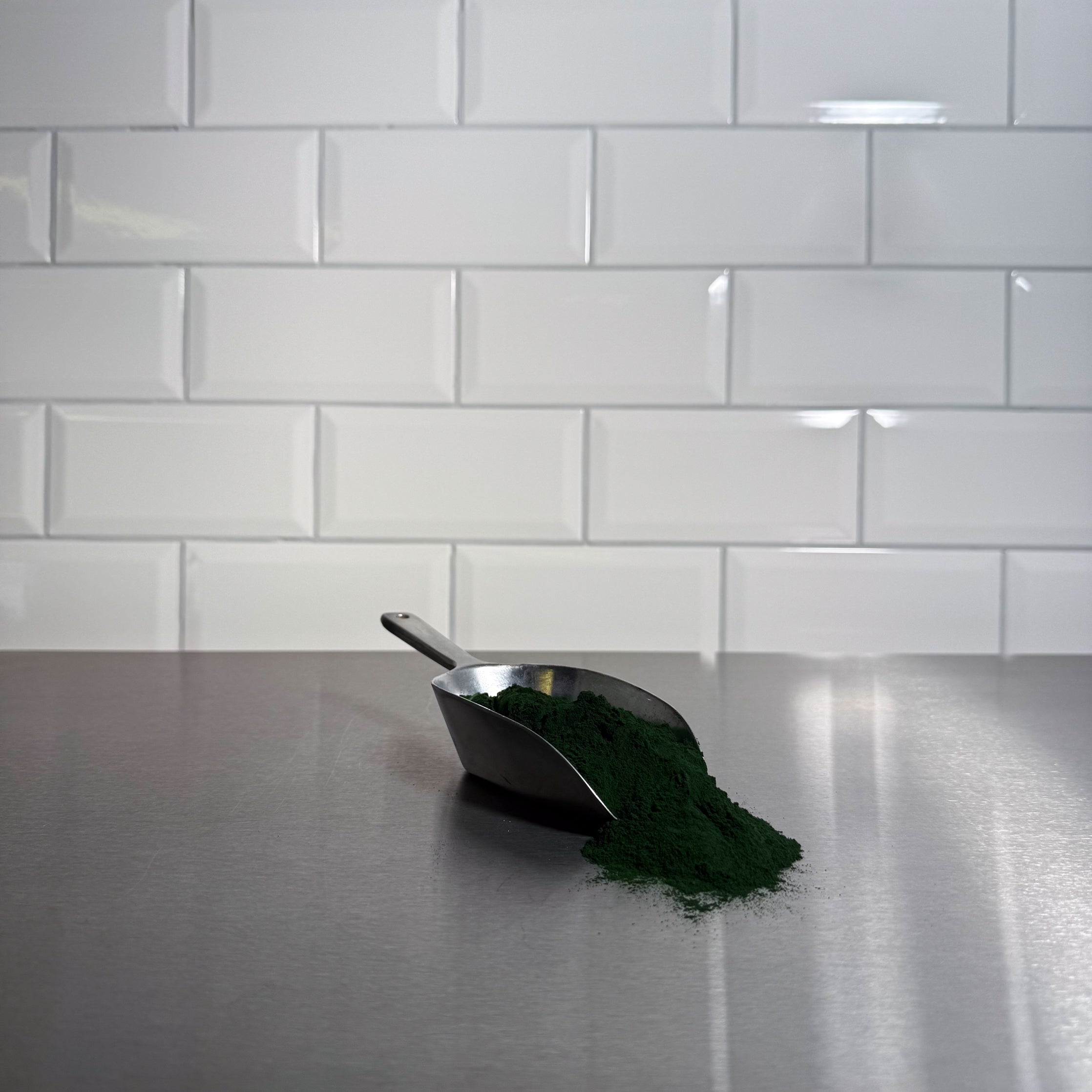What is spirulina anyway?
Strictly speaking, spirulina is not an algae, but a so-called cyanobacterium – a single-celled organism that performs photosynthesis and grows in alkaline salt lakes. The best-known species for dietary supplements is Spirulina platensis. In dried powder form, it has been marketed for decades as a nutritional bomb – full of protein, minerals, vitamins, and antioxidants.
The Inner Values – Nutrients in Spirulina
What sets Spirulina apart is its exceptionally high content of plant protein (up to 60%!), as well as an abundance of:
- Iron
- Vitamin B12 (but be careful: in a form that is poorly absorbed by dogs/cats)
- Beta-carotene (provitamin A)
- Chlorophyll
- Magnesium, calcium, zinc
- Phycocyanin – a special, antioxidant pigment
Particularly interesting: Phycocyanin has anti-inflammatory properties and, according to studies, can bind free radicals. This makes Spirulina attractive for animals with chronic inflammation, weak immune systems, or skin problems.
When can Spirulina be beneficial?
- Spirulina is not a must-have in a pet's bowl – but it is a useful supplement in certain situations:
- To support the immune system, e.g. For example, in older animals or after illness
- For skin and coat problems, especially dull coat, dandruff, or hair loss
- For detoxification, as spirulina can bind heavy metals (in moderate amounts!)
- For increased nutrient requirements, e.g., in athletic dogs or lactating bitches
- For allergy sufferers, as spirulina can lower histamine levels (use with caution!)
And what about cats?
Cats, as always, are a special case. Some don't like spirulina at all – often due to the smell or slightly fishy flavor. Others tolerate it very well. In general, there's nothing wrong with adding a small amount to the bowl, especially if the cat needs support for its immune system or coat. Important: Always introduce it slowly and ensure it's accepted!
Spirulina as a course of treatment or regularly?
We recommend using spirulina as a course of treatment – for example, for 4 to 6 weeks in spring and/or fall. During these phases, the microalgae gently supports the liver, skin, and metabolism. Spirulina can also be incorporated into the diet during shedding or convalescence.
It is possible as a long-term dietary supplement, but the dosage should be very conservative – especially for cats. If Spirulina is to be given permanently in the bowl, it is advisable to consult a specialist beforehand – especially regarding health issues.
Are there any risks?
As with many natural supplements, the same applies to Spirulina: the dose makes all the difference. Sensitive animals in particular – especially cats – can react to too rapid or too high a dose with diarrhea, nausea, or loss of appetite.
Therefore, always introduce it slowly, ideally starting with a pinch and increasing it over several days. This way, you can observe how your pet reacts – whether it tolerates Spirulina well, what its output is like, and whether it accepts it well.
Our conclusion
Spirulina is not a cure-all, but it is an exciting, natural nutrient booster – ideal for animals that need a little extra. Whether as a detox aid, for strengthening, or simply for a beautiful coat: the green microalgae can certainly be beneficial – provided it's dosed in high-quality doses and not sold as a miracle cure.
As always, less is more, and your pet will let you know if it even wants the green powder.

